9mm vs 10mm: Which is best for most people?
Although the names may give the impression that these are two similar rounds, that 1 mm makes a huge difference between these cartridges. While the debate may not be as hotly contested as 9mm vs. 45 ACP; there is enough here worth mentioning. Read on for our 9mm vs 10mm review.
9mm vs 10mm Spec Comparison

9mm Luger
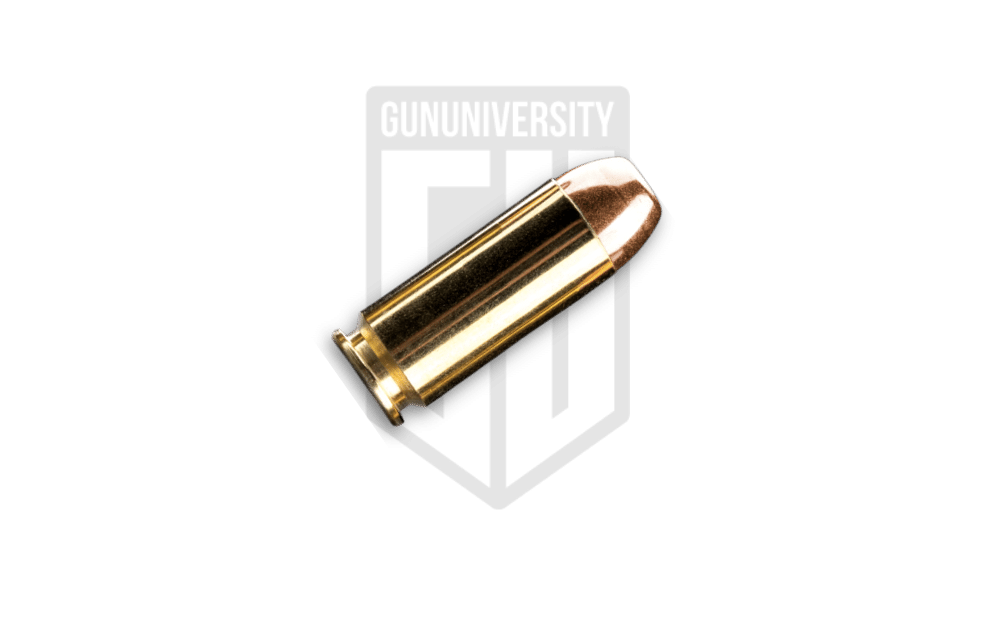
10mm Cartridge
Why Compare 9mm vs 10mm?
Recently, a colleague who was reviewing a new 10mm carbine asked me why the 10mm round even exists. He was genuinely not seeing the difference between 10mm and 9mm. This was a very experienced gun writer with combat experience in Iraq and a good knowledge of ballistics. His points were valid until I emailed him a picture from a Speer Reloading Manual from 1982 showing the ballistics for 9mm at that time. Then, he got it but the question remains in today’s world: Is there much of a difference between 9mm and 10mm?
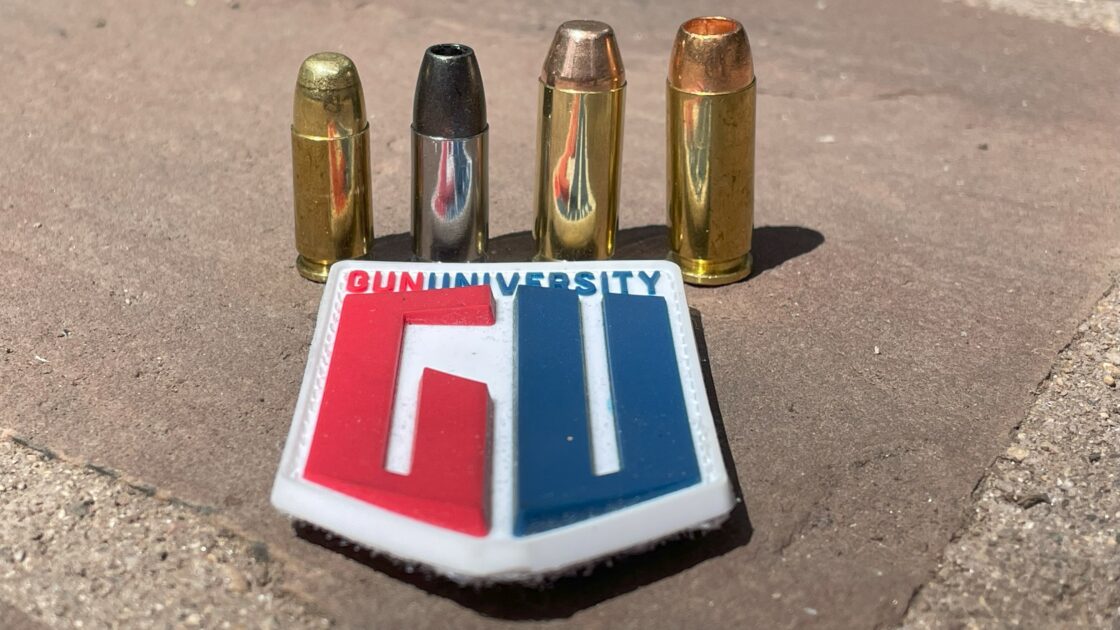
9mm Parabellum Review
It is perhaps the most common semiauto pistol cartridge in the world, but very few people realize it is well over 120 years old. In that amount of time there have been many changes to 9mm in its design and purpose.
Specifically, it went from an anemic load to one that is now measured closer to 357 Magnum within a few 100 feet per second. Improved construction of hollow point bullets helped performance exponentially.
History & Purpose
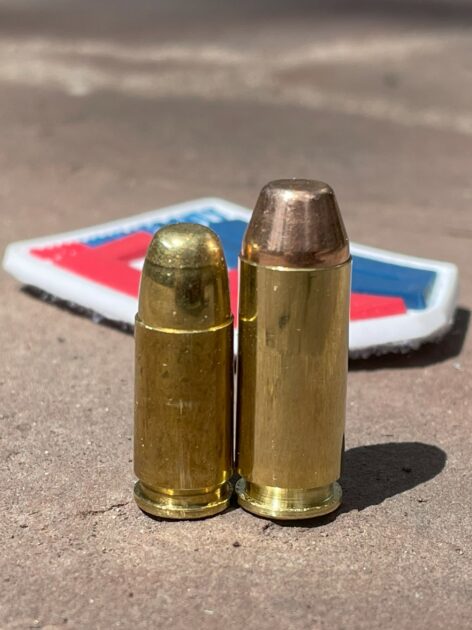
George Luger designed the 9mm round in 1901 as an improvement over his earlier bottle necked cartridge for the Borchardt pistol which was 7.65 x 21 because the German military wanted a round with a larger bore diameter for their pistols. Luger trimmed the bottle necked case and opened the mouth to accommodate a .355-inch (9mm) diameter projectile. The round was designed to be lethal at a range of 50 yards and in 1908 Luger adopted it to work in his P-08 pistol for the German Navy and later the German Army.
After World War II, the round became popular with shooters throughout the world, but more so in Europe than the United States. Its power factor combined with its relatively small size allowed more rounds to fit into staggered magazines and its low recoil made it easier for people to shoot. It started to take off in the United States in the late 1970s as more manufacturers moved to double stack magazines that could hold more rounds.
By the 1980s, the round made huge inroads in the law enforcement and self-defense communities, especially because of the US military’s adoption of the Beretta M9 pistol.
The round has evolved over the years to become quite the powerhouse as opposed to the somewhat anemic early smokeless powder round that it started out as.
It is variably known as 9mm Luger, 9mm Parabellum, 9mm NATO and 9x19mm.
9x19mm Pros and Cons
On the plus side, 9mm is probably the most common pistol round to be found throughout most of the world. It is a NATO standard pistol round. Whereas 10mm can be hard to find at times.
According to the FBI, 9mm meets their protocols for penetration and performance, while remaining relatively mild to shoot. When the FBI briefly adopted 10mm, they found the recoil too excessive for many of their agents.
The size of the 9mm round means the shooter can typically fit more rounds in a magazine (15-18) as opposed to larger calibers like 10mm, 40 S&W or 45 ACP (7-14). By the same token, the larger size of the 10mm round can make a handgun with a double stack magazine hard to hold properly.
If there is a particular downside to 9mm, it is that some of the available ammunition can be underpowered for anything other than target shooting.
9mm is really only good for self-defense and recreational target shooting. It makes for a poor choice with regard to handgun hunting.
Best Ammo for the 9mm Luger
For 9mm the best ammo is:
- Self Defense: CORBON 125-grain JHP +P
- Training: PMC Bronze 115 Grain FMJ
- Shooting Suppressed: Fiocchi 158-grain FMJ
Self Defense
CORBON 125-grain JHP +P – This is probably the most ideal self-defense load for 9mm, provided the pistol is rated for +P ammunition (loaded to higher pressures than SAAMI specifications). CORBON noted that in the 1980s most JHP ammunition would quickly turn to hardball” with regard to expansion as clothing material would plug up the hollow point of the bullet and keep it from expanding. CORBON loaded this round to higher pressure and velocity.
The rapid energy transfer from the bullet’s immediate expansion in ballistic gelatin has given this round an over 90% one-shot stop rating and it penetrates between 9 to15” inches.
Self Defense
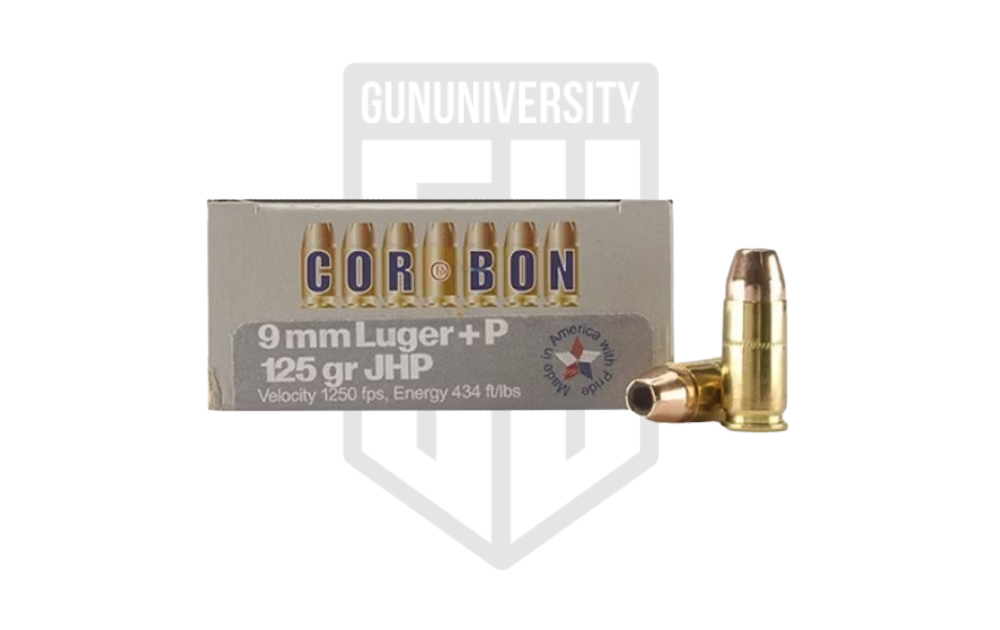
CORBON 9mm 125-grain JHP +P
Marketplace |
Cost Per Round |
| Natchez | $1.10 |
| Target Sports USA | $1.15 |
| Palmetto State Armory | $1.20 |
Training
PMC Bronze 115 Grain FMJ – For training on the range, PMC’s Bronze has always been a performer. It is one of the most widely available 9mm rounds and can almost always be found on the shelf. It is very soft shooting and most importantly it’s clean accurate and reliable.
Training
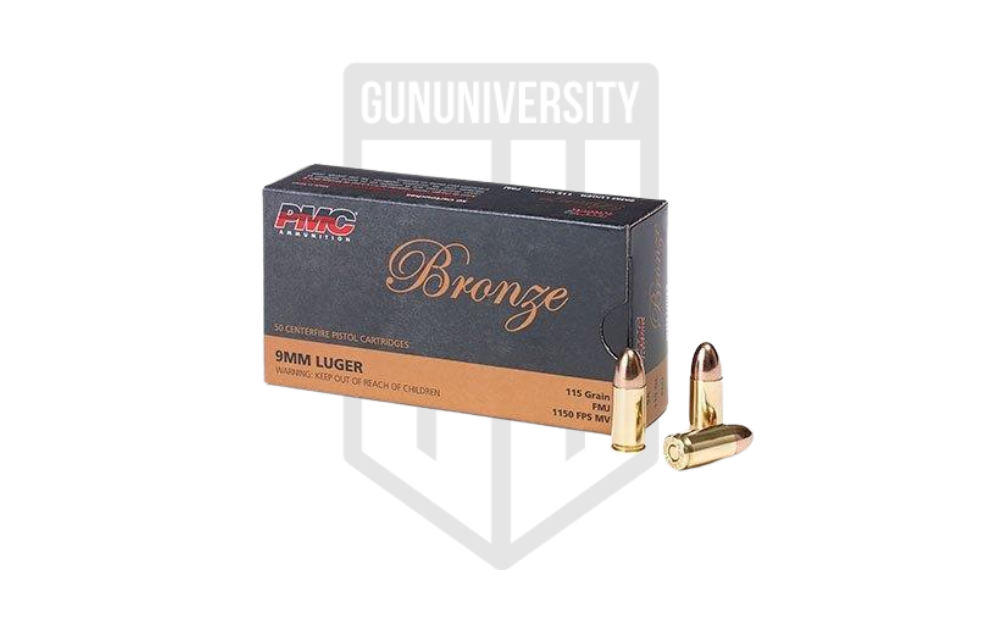
PMC Bronze 9mm 115 Gr FMJ
Marketplace |
Cost Per Round |
| Natchez | $0.27 |
| Palmetto State Armory | $0.28 |
| Target Sports USA | $0.28 |
Suppressed shooting
Fiocchi 9mm 158-grain FMJ – Fiocchi’s subsonic 9mm ammo is loaded with an extra heavy bullet that travels at 850 feet per second. This is way below the supersonic level and if you are shooting suppressed, you will find it extremely quiet..
Self Defense
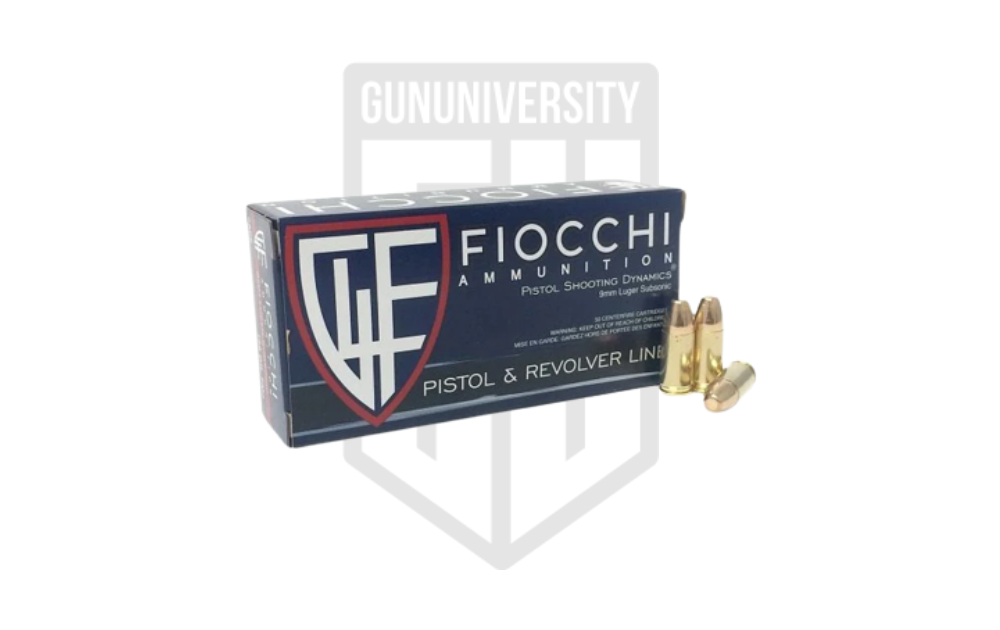
Fiocchi 9mm 158 Gr FMJ
Marketplace |
Cost Per Round |
| Target Sports USA | $0.44 |
| Optics Planet | $0.58 |
| Sportsman’s Warehouse | $0.50 |
10mm Auto Review
The 10mm Auto or 10mm Norma is a relatively new round in the grand scheme of things, being only 40 years old. Its intent was to replicate the 357 Magnum 125-grain police load as this was the benchmark for law enforcement performance in the United States for close to 50 years.
Unfortunately, 10mm went in the opposite direction of 9mm, with the cartridge gradually being downloaded at the factory from how it was originally introduced.
History & Purpose
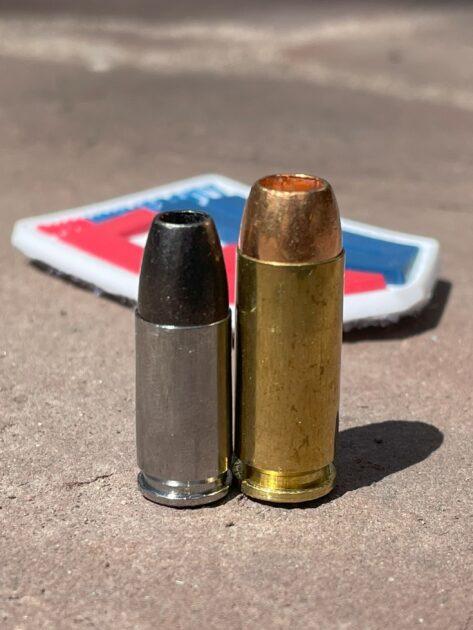
Development of the 10mm Auto round goes back to 1983. It was designed by FFV Norma as a straight wall semi auto pistol round and was designed from the ground up to duplicate the performance of the 357 Magnum round for police work.
Several prominent personalities in the firearms training realm such as the late Col. Jeff Cooper advocated for the round and the pistol called the Bren Ten. Unfortunately, the Bren Ten project was rife with flaws and 10mm almost faded away until Colt chambered their 1911 in it as the Delta Elite.
In 1986 there was an infamous gun battle in Miami, Florida between the FBI and two bank robbers which left two agents dead, and five others wounded. Despite other errors and bad decisions, the FBI laid the blame on the failure of the 9mm round to incapacitate the bank robbers and announced a search for a new handgun cartridge for their agents.
10mm seemed perfect on paper based on muzzle energy, velocity, projectile mass, and penetration results. Smith & Wesson seized on the idea and designed two new double action pistols from the ground up for the FBI as the stainless-steel Models 1076 and 1006.
Initial testing was met with approval, but the 1989 rollout was less than ideal. The majority of FBI agents reported that the recoil of the 10mm Auto was too harsh to shoot comfortably let alone accurately.
The FBI returned to the drawing board for an entirely new cartridge and ended up shortening the 10mm by a few millimeters in length, downloading the powder charge and essentially creating the 40 S&W.
While the Bureau had a new cartridge and abandoned the 10mm; it was kept alive by a legion of die-hard fans who were shooters and hand loaders that understood the potential of the round.
10mm Pros and Cons
Potentially, the 10mm has the makings of a great hunting cartridge. With the right ammunition and an ideal barrel length, hunters have used it successfully against deer, wild pigs, and black bears. Police officers in Norway carry it for use against polar bears.
As a defensive cartridge, the 10mm is a performer on par with 357 Magnum, although it does exhibit stouter recoil.
One of the biggest downsides to 10mm is often ammunition cost or even availability, especially when compared to something like 9mm.
There are not as many handguns chambered in 10mm as there are in 9mm and for the most part they tend to be larger than their 9mm counterparts. Although, the round is going through a sort of renaissance currently and selection is improving.
Best Ammo for the 10mm
For 10mm the best ammo is:
- Hunting: Doubletap 200gr Hardcast Solid bullet WFNGC
- Training: PMC Bronze 200 Grain FMJ
- Self Defense: Buffalo Bore Heavy 10mm 180-grain JHP
Hunting
Doubletap 200gr Hardcast Solid bullet WFNGC (Wide Flat Nose Gas Check) – This is one of the absolute best handgun hunting loads ever offered for 10mm. It is designed for deep penetration through soft tissue, heavy bone, and animal hide. The wide flat nose meplat cuts a large, clean hole without any flight deviation or deflection. It retains its shape well and will not deform on impact. In addition, it is gas checked to prevent melting of the lead bullet within the barrel.
Doubletap reports that hunters have successfully used this round to harvest cape buffalo in Africa.
Hunting
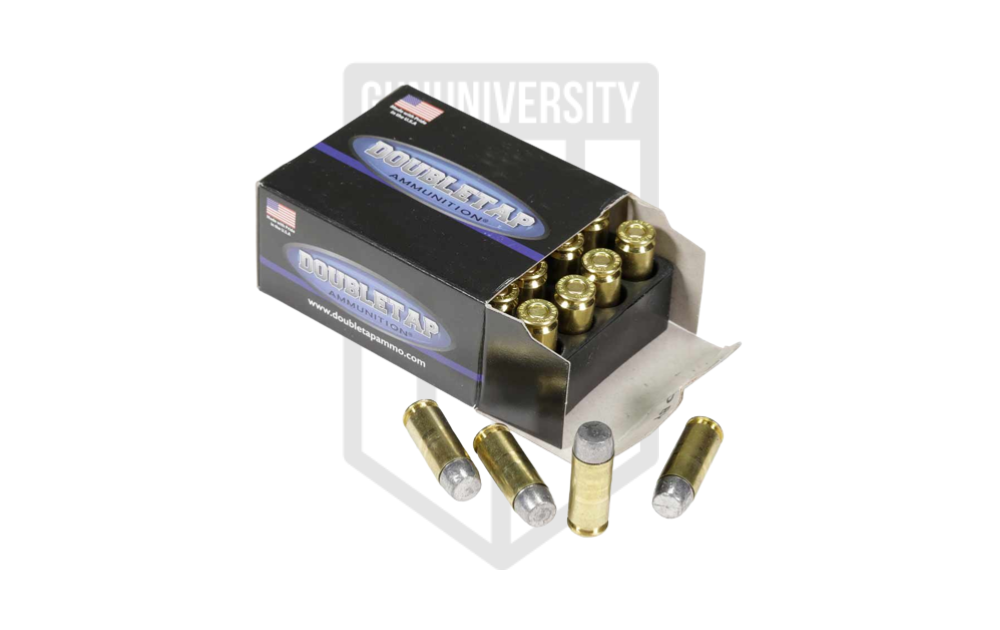
Doubletap 200gr Hardcast Solid bullet WFNGC
Marketplace |
Cost Per Round |
| TRG Parts | $1.08 |
| Palmetto State Armory | $1.15 |
| Bauer Precision | $1.49 |
Training
PMC Bronze 200 Grain FMJ – For training on the range, PMC’s Bronze has always been a performer. It is one of the most widely available 10mm rounds and can almost always be found on the shelf. It is very similar to shooting a 45 ACP and most importantly it’s clean accurate and reliable.
Training
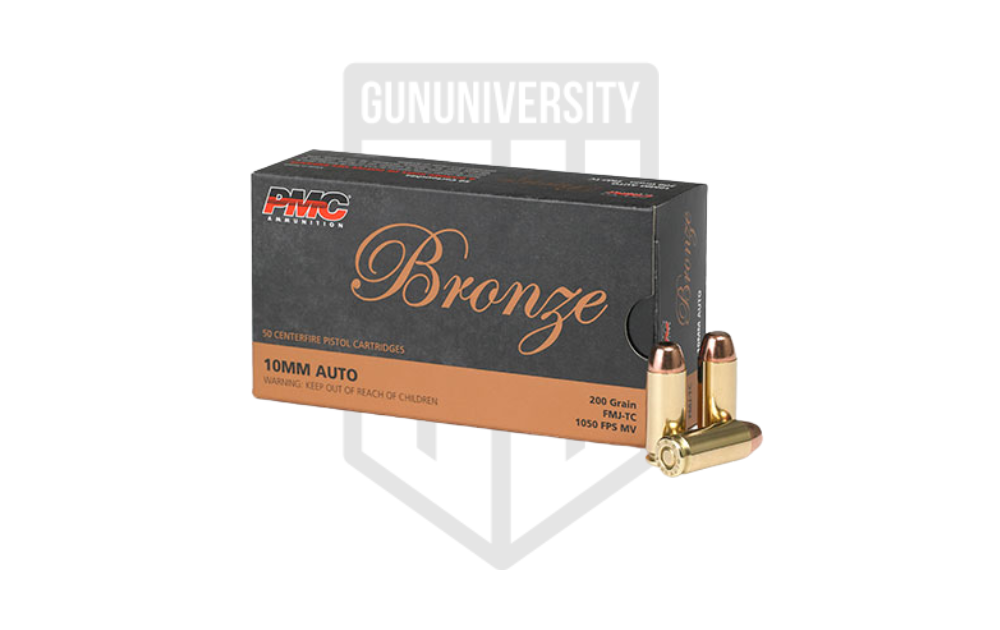
PMC Bronze 10mm 200 Gr FMJ
Marketplace |
Cost Per Round |
| Target Sports USA | $0.58 |
| Natchez | $0.58 |
| Sportsmans Warehouse | $0.64 |
Self Defense
Buffalo Bore Heavy 10mm 180-grain JHP – If there is a load that perfectly duplicates the 357 Magnum defense load, it is Buffalo Bore’s Heavy 10mm line. This one throws a 180-grain JHP from a 5-inch barrel at an impressive 1350 fps. It brings out the full potential of the 10mm true to its original intent at safe standard pressure and is safe to use in any standard 10mm pistol or carbine.
Self Defense
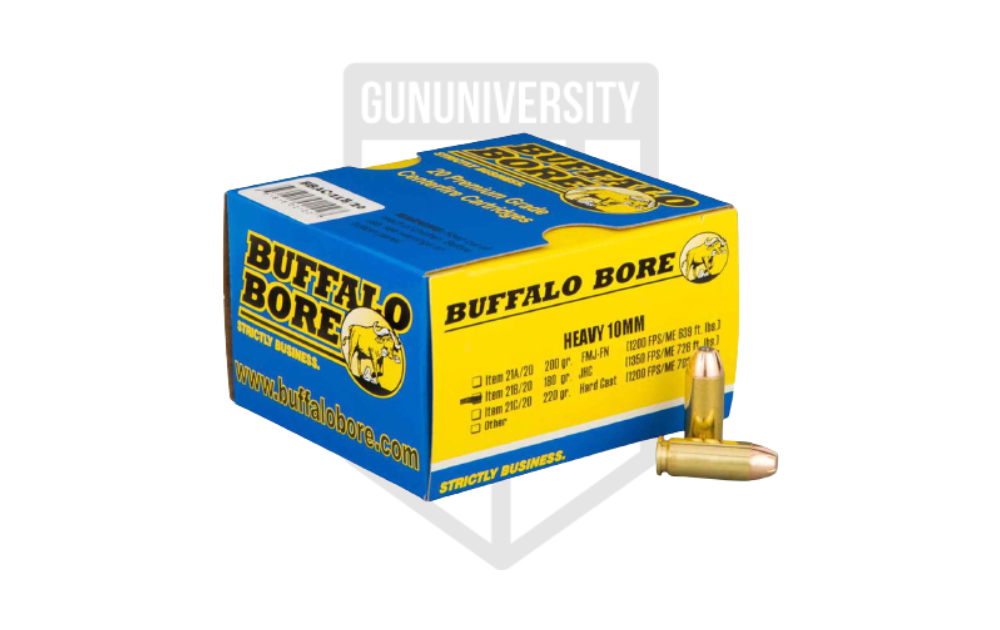
Buffalo Bore Heavy 10mm 180 Gr JHP
Marketplace |
Cost Per Round |
| Palmetto State Armory | $1.80 |
| Optics Planet | $2.45 |
| MidwayUSA | $2.37 |
9mm vs 10mm Comparison
Weapon selection
There are far more 9mm firearms available than 10mm equivalents. This has a lot to do with 9mm having a nearly 80-year lead on 10mm as well as 9mm being the preeminent choice for police, military, and security forces all over the world for much of that time. Although more manufacturers are adding 10mm handguns to their catalogs, 9mm probably has a 20 to 1 lead on current production numbers.
Revolvers are manufactured for both cartridges. Although, the 10mm revolver seems a bit pointless as the full-sized Magnum revolver rounds are rimmed and don’t require moon clips and eclipse the power of the 10mm. 9mm offers lower recoil than many rimmed revolver rounds and can make for a potent concealed carry or backup revolver.
Here are articles to our favorite handguns in both calibers:
Bullet weights
The primary advantage of the 10mm over the 9mm is that the greater bullet diameter and increased case capacity allow the use of heavier bullets up to 230 grains; they are most typically between 180 and 210 grains although you can find them lighter in some instances. Whereas the 9mm is limited to about 147-158 grains and remains subsonic. There are heavier 9mm bullets available, but these are niche loads and the bullet size takes up more internal case volume than is ideal. The typical weight of standard 9mm bullets are 115-124 grains.
Suppressed Usage
As most 10mm ammunition is supersonic, it makes for a poor suppressor host due to the supersonic crack. Heavier 9mm bullets from 124 grains on up can be loaded to subsonic levels and are very quiet when fired through a silencer.
Reloadability
As a ballistician, ammo shortages never really concern me as I can make my own bullets and in some cases brass. I find both rounds easy to load as they are straight wall pistol cartridges. 10mm brass seems to hold up longer, but the components (brass, powder, bullets, and large pistol primers) are more expensive than its 9mm counterparts.
Our Take
In my opinion, I enjoy both cartridges for different reasons. I find 9mm reliable, affordable, and effective for self-defense. Yet, if I am going hiking, hunting, or looking for fossils in Montana or Wyoming, 10mm is what rides on my hip as bears are a part of daily life there.
Although 9mm is cheaper to reload, reloading 10mm rounds is its own reward. As a young ballistician, 10mm was the cartridge I looked forward to loading because I could make it better than what was available from the big factories at the time.
However, I do realize that 10mm is not for everybody. If you shoot a lot and have experience with Magnum revolver rounds (357 Magnum, 41 Magnum, 44 Magnum), and don’t mind reloading or at least stocking up when ammo is available; 10mm will work for you. If you are recoil sensitive, shoot occasionally, suffer from arthritis or carpal tunnel, or don’t care to roll your own cartridges and rely on what you can find of the shelf; then you will probably be better served with 9mm.
Recent Posts
December 15, 2025
December 15, 2025
December 12, 2025
December 12, 2025



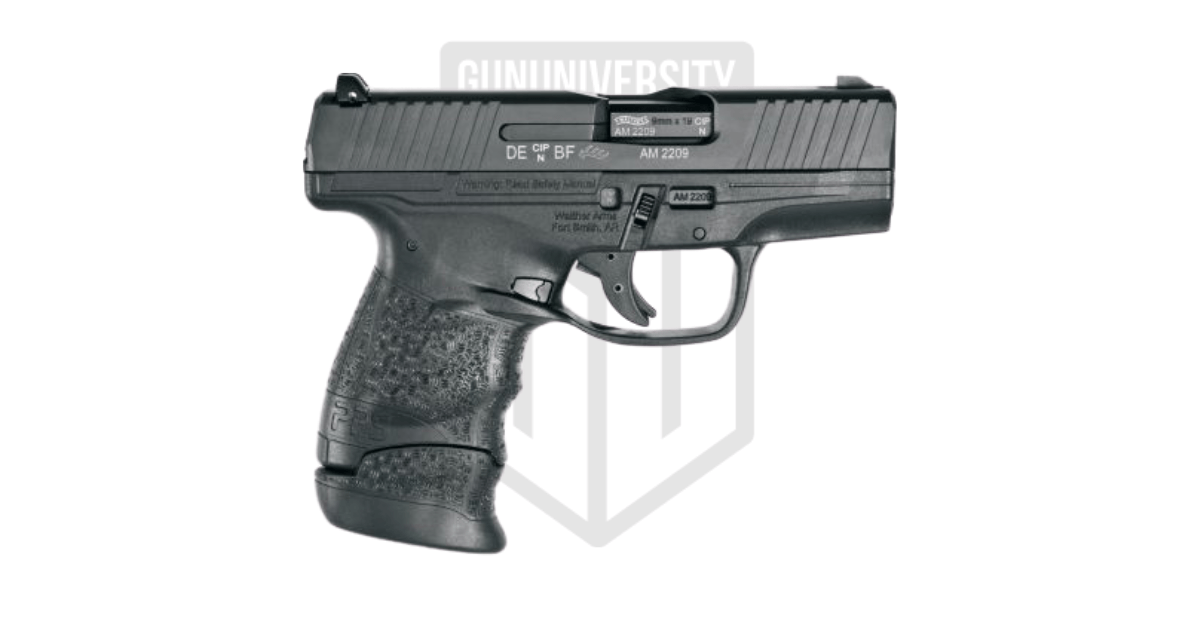
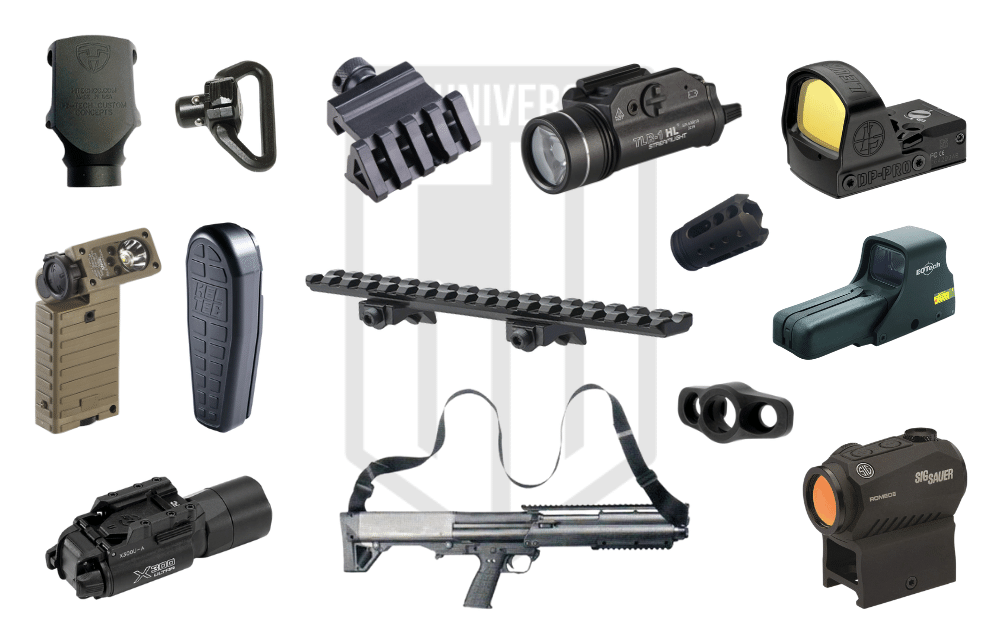
Good report. I just bought a full size sig 9mm over the pricy 10mm. The rounds are affordable, 10 not so. 200 fps difference is not so important unless you are hunting. And that should be with a rifle not a pistol? I own a full size 45 also, my military favorite. Get hit with a pebble, or a big rock? You will surely know the difference. The shoot out in L A is a poor excuse for round choice. The bad guys probably had body armor on and the police couldn’t hit squat? 10 mm would have made no difference. Needed ar15’s. Even police are poorly trained on combat and live firing situations (I was in army MP) highly trained in live fire. I saw grown men who couldn’t hit a tractor. I was a marksman. Don Hall.